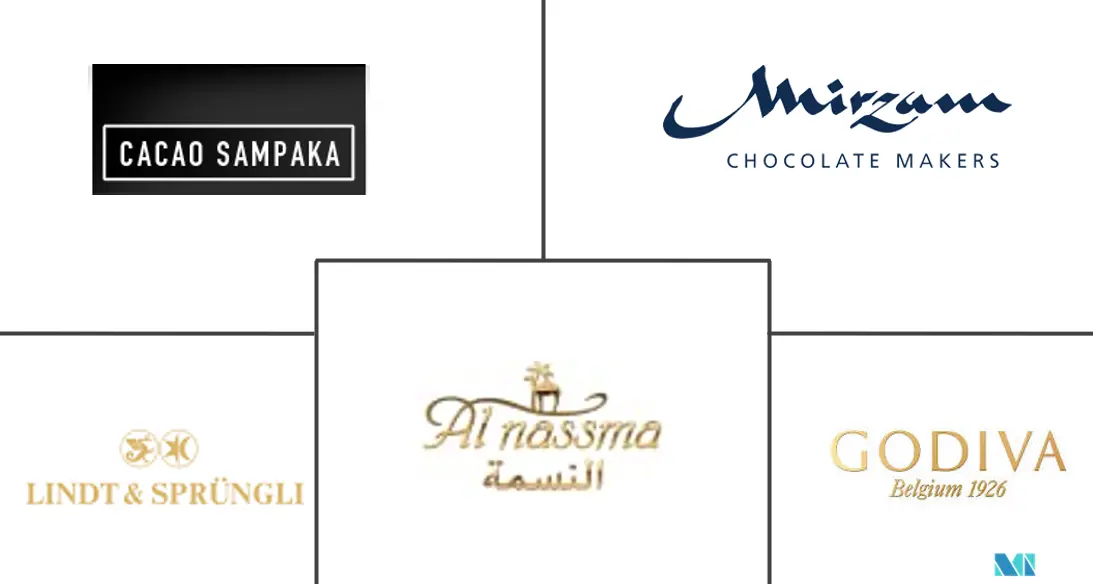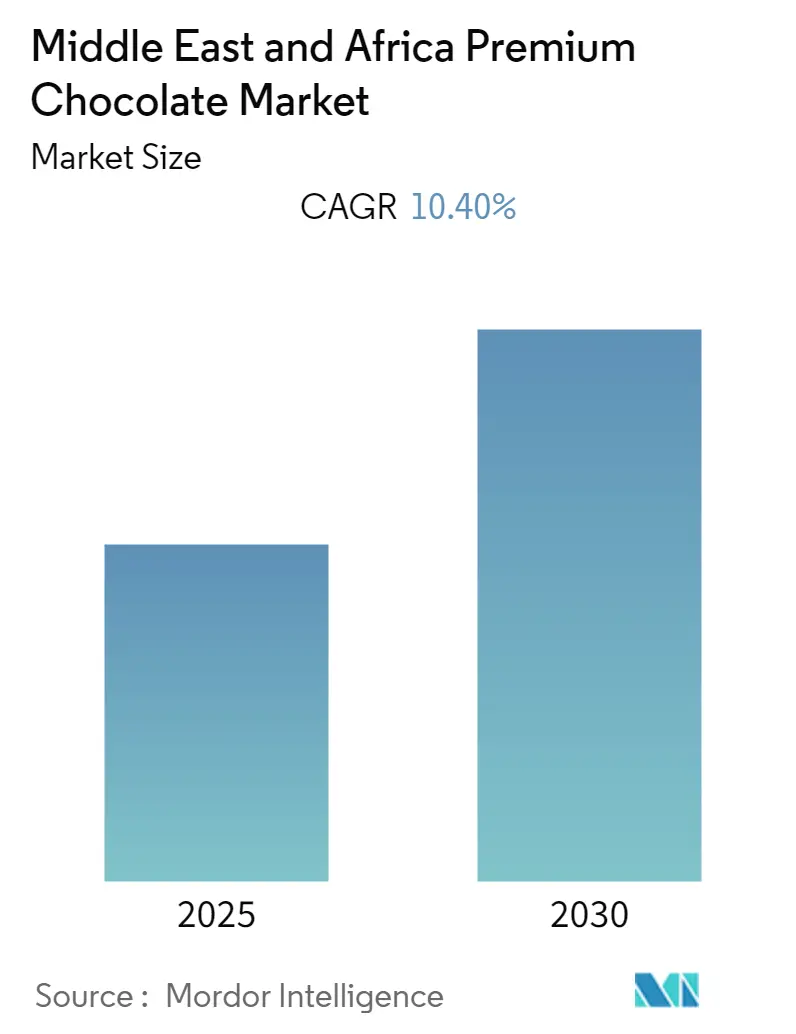
Middle East and Africa Premium Chocolate Market Analysis by Mordor Intelligence
The Middle East and Africa Premium Chocolate Market is expected to register a CAGR of 10.4% during the forecast period.
The rising popularity of premium chocolates as gifting items for special occasions is identified as a key market driver in the region. Further, this trend has created more opportunities and scope, which major market players, such as Mars Inc., Mondelez International, and Nestle, are addressing with increasing product launches and expansions. They are keen on rebranding or reformulating their mass-market chocolates to sell a more expensive premium experience and create a healthier image. Additionally, in line with this trend, consumers in the Middle East and Africa are looking out for more sophisticated tastes and different products from common brands found in the retail sector. This has created a surge in demand for high-quality premium chocolate products. For instance, Lindt and Ferrero were introduced a little over a decade ago, which has considerably raised the profile of premium chocolates in South Africa.
Moreover, attractive product offerings from regional and global brands are influencing consumer spending on premium chocolates. For instance, in Dubai, the chocolate producer Forrey and Galland offers a range of classic and Arabic fusion handmade chocolates. It also offers an option of personalization to its customers to get chocolates of their taste. Few other chocolate companies, such as Cacao Sampaka and Godiva, have an extensive catalog of corporate gift chocolate boxes. Such offerings with unique packaging and customization options from major companies in the region are also making premium chocolates a perfect gift for any occasion.
Middle East and Africa Premium Chocolate Market Trends and Insights
Health Benefits of High Quality Premium Chocolates Drives the Market Growth
Over the years, several studies have pointed to the health benefits of eating dark chocolate, that is, chocolate with a high cocoa content (usually 65 to 80%). For starters, dark chocolate usually has less sugar and more cocoa solids, which is where beneficial flavonol compounds reside. Flavonols are thought to lower blood pressure and improve heart health. Raw cacao has many beneficial qualities: it is high in magnesium, which can curb sugar cravings, is high in fiber, and contains iron and protein, as well as antioxidants. Furthermore, a few recent research findings indicate that chocolate consumption aids in looking younger due to its anti-aging properties. It also relieves stress. This is expected to push the demand for chocolate in the Middle East and African countries. Moreover, the demand for fine flavor cocoa in regions such as Saudi Arabia and South Africa is experiencing substantial growth. Ultra- and high-end beans are used for gourmet chocolates and regular, and low-fine beans are used for regular premium chocolates. This development is driven by the health trend and the quest for more exclusive products.
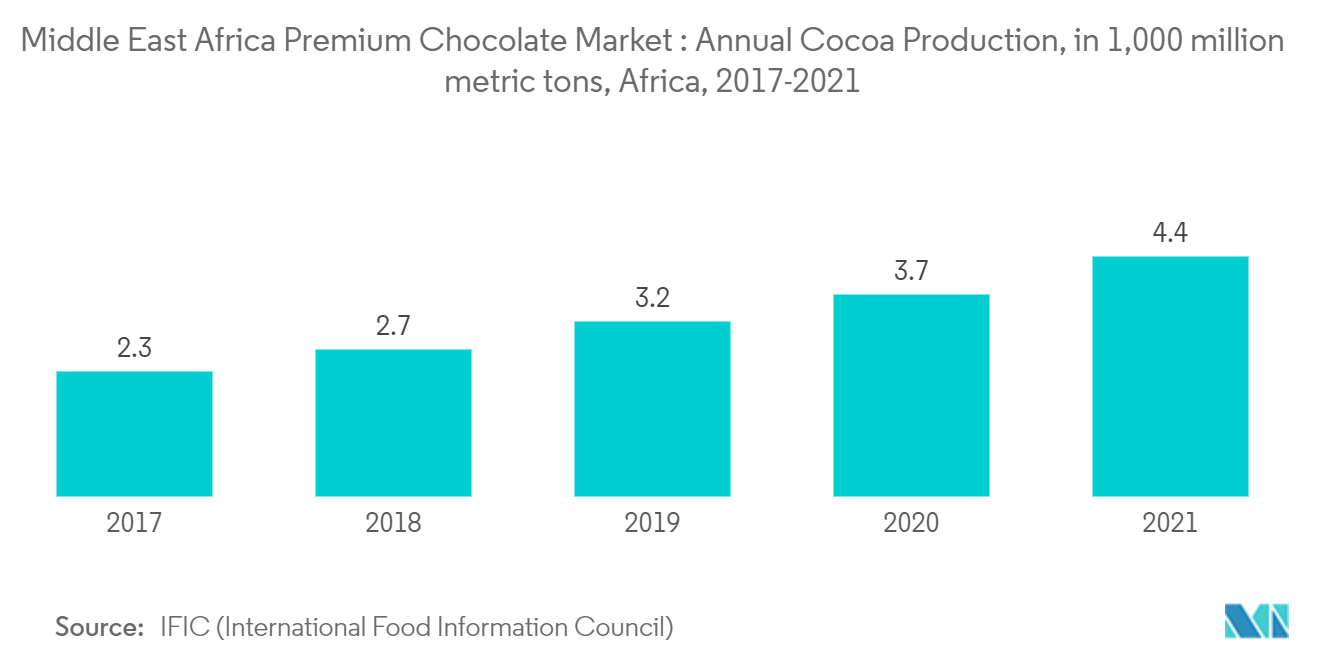
Saudi Arabia Holds The Largest Share
The chocolate market in Saudi Arabia is driven by the rising consumer interest in premium chocolates and increasing disposable incomes among middle-income consumers, coupled with the manufacturers widening their distribution channels with the motto to reach a more extensive consumer base, thus capturing the market share. Additionally, most manufacturers offer unique packaging options and personalization into different sizes and shapes according to the consumers' convenience, which supports the growing demand for premium chocolates in the country. Premium chocolates are becoming more popular as a perfect gifting option owing to their packaging styles and multiple offerings. Artisan chocolates are made of natural ingredients with a lower carbon footprint than other chocolates available in the market. They are in demand among the consumers of the country. Moreover, in line with this growing demand, most companies in Saudi Arabia have an organized distribution channel. The supermarkets/hypermarkets offer discounts on heavy-priced premium chocolate products, which is expected to boost sales even further.
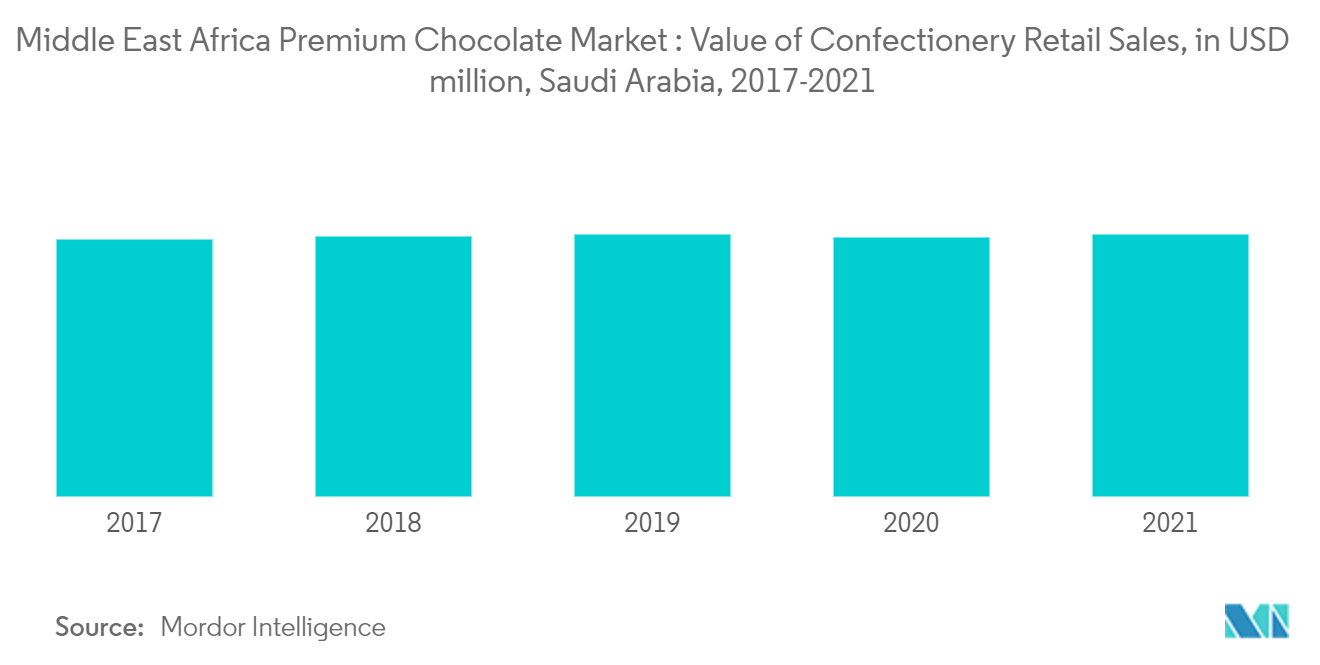
Competitive Landscape
The Middle East and African premium chocolate market is highly competitive, with a significant presence of both global and regional players. Prominent players in the market studied are keen on building an appetite for higher-priced chocolates among young consumers by increasing accessibility and launching innovative products. Companies also focus on expanding their distribution channels to reach out to a larger consumer base. Tourists and travelers also contribute a larger share of the sales of premium chocolates across the region. Hence, players in the market studied have been expanding their presence and offerings in the travel retail sector. A few major players that held a prominent share in the market include Chocoladefabriken Lindt & Sprüngli AG, Al Nassma Chocolate LLC, Cocoa Sampaka, Mirzam, Al Quoz, and Godiva.
Middle East and Africa Premium Chocolate Industry Leaders
-
Al Nassma Chocolate LLC.
-
Cocoa Sampaka
-
Mirzam, Al Quoz
-
Chocoladefabriken Lindt & Sprüngli AG
-
Godiva
- *Disclaimer: Major Players sorted in no particular order
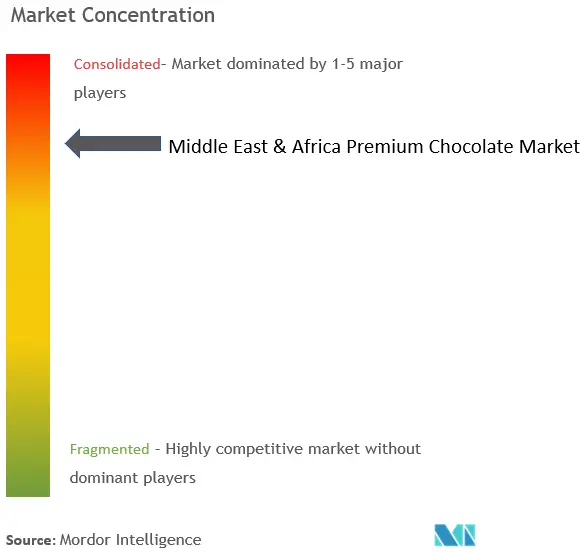
Recent Industry Developments
- December 2022: The inauguration of a new store in Dubai was announced by Mohammed Rasool Khoory and Sons and Läderach, one of the largest artisanal chocolatiers in Switzerland, producing its own chocolate since 2012. The new Läderach store is situated in Dubai Mall, on the lower ground floor of the complex.
- July 2022: As a travel retail exclusive with Dubai Duty-Free, Nestlé International Travel Retail (NITR) introduced Mackintosh's Quality Street Oriental Selection with four regional flavors. The four regional flavors are Mohalabiya, Baklawa Pistachio, Qamar El Din, and Rose Pistachio.
- October 2021: Barry Callebaut opened a new Chocolate Academy at the foot of Burj Khalifa in Dubai, United Arab Emirates. The new location and facility will serve as a creative platform for chefs and artisans to display and develop their abilities and talents. The company has 24 such establishments across the world. This move aims to propel innovation as there is a shift in consumer preference toward premium products and new varieties in the chocolate market.
Middle East and Africa Premium Chocolate Market Report Scope
Premium chocolate can refer to a number of things, such as the high quantity of cocoa used in the bar, sustainably sourced ingredients, a combination of rich ingredients, such as raspberry chunks or alcohol, and sophisticated packaging.
The Middle East and African premium chocolate market is segmented based on product type, distribution channel, and geography. By product type, the market is segmented into dark chocolates and white and milk chocolates. By distribution channel, the market is segmented into hypermarkets/supermarkets, convenience stores, online retail stores, and other distribution channels. It provides an analysis of emerging and established economies across the region, including South Africa, Saudi Arabia, the United Arab Emirates, and the Rest of Middle East and Africa. For each segment, market sizing and forecasts are provided in terms of value in USD million.
| Dark Premium Chocolate |
| White and Milk Premium Chocolate |
| Supermarkets and Hypermarkets |
| Convenience Stores |
| Online Retail Channels |
| Other Distribution Channels |
| South Africa |
| Saudi Arabia |
| United Arab Emirates |
| Rest of Middle East and Africa |
| Product Type | Dark Premium Chocolate |
| White and Milk Premium Chocolate | |
| Distribution Channel | Supermarkets and Hypermarkets |
| Convenience Stores | |
| Online Retail Channels | |
| Other Distribution Channels | |
| Geography | South Africa |
| Saudi Arabia | |
| United Arab Emirates | |
| Rest of Middle East and Africa |
Key Questions Answered in the Report
What is the current Middle East and Africa Premium Chocolate Market size?
The Middle East and Africa Premium Chocolate Market is projected to register a CAGR of 10.4% during the forecast period (2025-2030)
Who are the key players in Middle East and Africa Premium Chocolate Market?
Al Nassma Chocolate LLC., Cocoa Sampaka, Mirzam, Al Quoz, Chocoladefabriken Lindt & Sprüngli AG and Godiva are the major companies operating in the Middle East and Africa Premium Chocolate Market.
What years does this Middle East and Africa Premium Chocolate Market cover?
The report covers the Middle East and Africa Premium Chocolate Market historical market size for years: 2019, 2020, 2021, 2022, 2023 and 2024. The report also forecasts the Middle East and Africa Premium Chocolate Market size for years: 2025, 2026, 2027, 2028, 2029 and 2030.
Page last updated on:
Middle East and Africa Premium Chocolate Market Report
Statistics for the 2025 Middle East and Africa Premium Chocolate market share, size and revenue growth rate, created by Mordor Intelligence™ Industry Reports. Middle East and Africa Premium Chocolate analysis includes a market forecast outlook for 2025 to 2030 and historical overview. Get a sample of this industry analysis as a free report PDF download.
